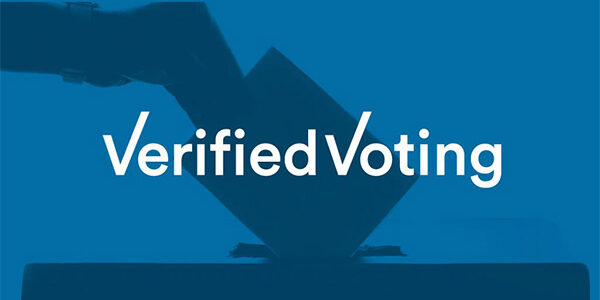Below are Verified Voting’s submitted comments on the Election Assistance Commission’s Voluntary Voting System Guidelines (VVSG) Lifecycle Policy 1.0.
U.S. Election Assistance Commission
633 3rd Street NW, Suite 200
Washington, DC 20001
Submitted electronically
December 7, 2021
On behalf of Verified Voting, I submit these comments in response to EAC-2021-0001- 0001, the draft VVSG Lifecycle Policy 1.0. Verified Voting is a nonpartisan nonprofit organization with a mission to strengthen democracy for all voters by promoting the responsible use of technology in elections. Since our founding in 2004 by computer scientists, we have acted on the belief that the integrity and strength of our democracy rely on citizens’ trust that each vote is counted as cast.
Verified Voting welcomes and broadly supports this lifecycle policy. VVSG 2.0 incorporates many improvements over VVSG 1.0, which was adopted in 2005 and remains the certification standard today. For voters to benefit from the enhanced 2.0 standards, manufacturers must develop and offer 2.0-certified systems, and jurisdictions must purchase them. These goals require an end to the pattern in which new voting machines and software are submitted for certification as mere modifications to existing systems, to be tested under the outdated VVSG 1.0 standard.
The new draft establishes a credible path toward sunsetting VVSG 1.0. Section 3.3 of the draft policy sets a clear timeline to deprecate VVSG major versions (including 1.0) after a new major version is released: 24 months after at least one VSTL is accredited to test to the new standard. To break the cycle of interminable “updates” to obsolescent systems, Section 3.4 defines five categories of minimal change that can be approved, and tasks the EAC – not the manufacturer – with deciding whether a change is minimal.
One weakness of the draft policy is that the term “minimal change” appears to be defined only by the five permissible categories (lines 85-101, section 3.4.1). For instance, it seems that any change that is “legally required in a jurisdiction already fielding the system due to some form of change in legislation” (lines 94-95) – no
matter how extensive – would qualify as a “minimal” change to be certified under a deprecated standard. The draft policy does not explicitly allow, much less require, the EAC to evaluate whether a change in fact is minimal. To permit large-scale innovations under the “minimal change” standard could reprise the failure of VVSG 1.1 and squander the effort that has gone into VVSG 2.0. We urge the EAC to provide an explicit procedure for assessing whether a change that falls within a permissible category qualifies as “minimal.” This procedure could incorporate substantive criteria, like the previously posed criteria for “new systems” under VVSG 1.1. It also, or alternatively, could allow for public comment when manufacturers submit putatively minimal changes.
With the preceding caveat, we are optimistic that the new lifecycle policy will help bring the benefits of VVSG 2.0 to voters in the not so distant future.
Sincerely yours,
Sangita Sigdyal
President & CEO
Verified Voting
